An uncommon edible polypore which looks like a smaller cousin of Dryad’s Saddle.
Home / Mushroom Guide /
Tuberous Polypore
Tuberous Polypore
| Mushroom Type | |
| Common Names |
Tuberous Polypore (EN), Cyfrwy Cnapwreiddiog (CY), Żagiew Guzowata (PL), Olaszgomba (HU) |
| Scientific Name |
Polyporus tuberaster |
| Season Start |
May |
| Season End |
Oct |
| Average Mushroom height (CM) |
1–6 |
| Average Cap width (CM) |
2–12 |
Please note that each and every mushroom you come across may vary in appearance to these photos.
Cap
2–12 cm wide, circular to semi-circular, convex when young, more funnel shaped with age, rather similar looking to the Dryad’s Saddle’s cap. Skin dark cream to ochre, covered with adpressed, light brown, pyramidal scales (their end is often darker), could be slightly slimy if wet. Margin sharp, might be a little wavy.
Pores
Tubes are white to pale cream, 5–7 mm long, strongly decurrent. Pores wide, elongated and angular (similar to a Dryad’s Saddle’s pores), 1–2 x 0.5-1 mm, white to pale cream.
Stem
1–6 cm tall, 0.5–1.5 cm wide. Mostly cylindrical but often narrowing towards the base, white, fleshy (compact and dense). The base is covered with white to cream coloured fine hairs.
Possible Confusion
Most of the cases it is confused with Dryad’s Saddle (Cerioporus squamosus), pictured, which is normally much bigger at maturity, its stem base is bulbous and darkening, and the stem is not usually in a central position to the cap. The scales on its cap are also darker than the scales on Tuberous Polypore’s cap.
Taste / Smell
Edible, tastes mild, smells pleasant, mushroomy.
Frequency
Uncommon, occasional, maybe locally common in some parts of the UK, but it is worth recording.
Spores
Spore print is white. Spores cylindric, ellipsoid, colourless (hyaline) and smooth (with drops).
Other Facts
This species has three ecological types. The most common one is when the fruit body is growing out of stumps or fallen branches of different hardwoods. It might grow out of buried hardwood branches (and the fruit body attached to its substrate with a mycelial cord). The rarest one grows out of a dark (pseudo)sclerotium.


 (8 votes, average: 4.13 out of 5)
(8 votes, average: 4.13 out of 5)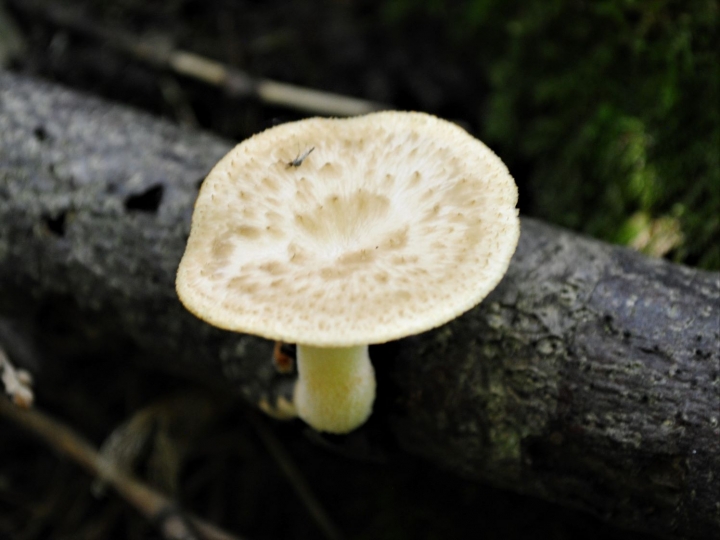
















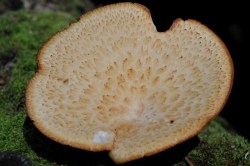
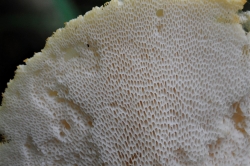
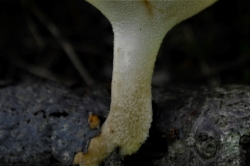
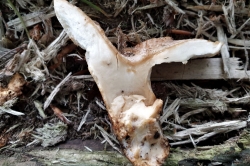
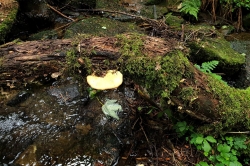
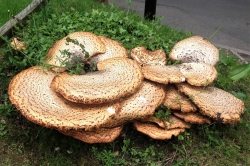






Leave a Reply